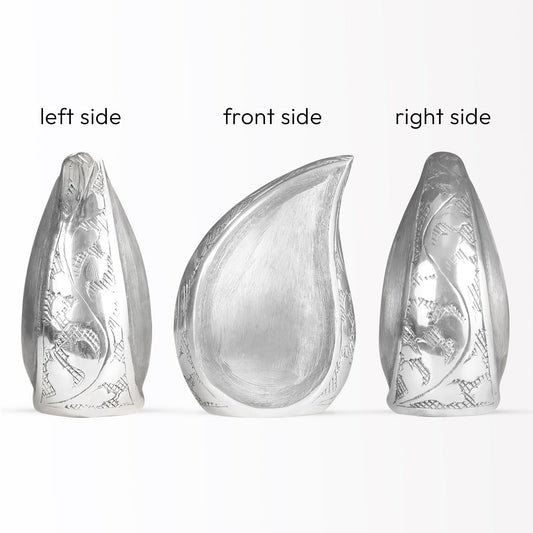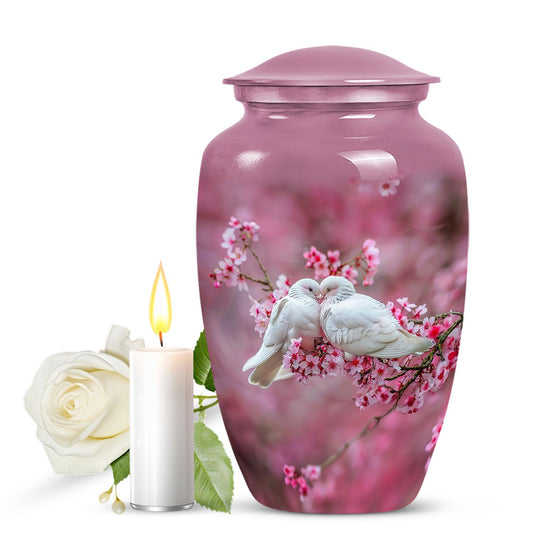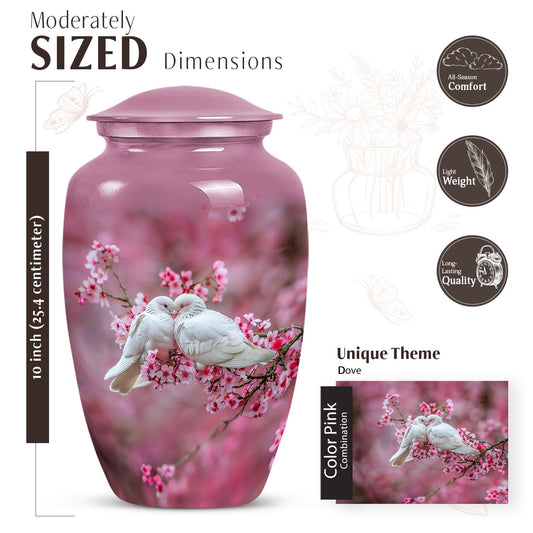Popular Urns
What Is The Difference Between Memorials And Celebrations Of Life?

Memorials
A memorial is an official ritual of remembrance of the life of the deceased. More formally, usually taken at a funeral home, a place of worship or another appropriate venue, a memorial is typically very somber. It provides a formal setting where friends and family can come together in sorrow, hearing stories about and contemplating the life lost.

Normally, the air of a memorial is somber. Participants may listen to an obituary, hear scripture readings or participate in a few rituals if their cultural or religious traditions call for it. Normally, it all revolves around loss; one hears words of anguish and the remembrances which those in agony share with each other. It is supposed to be a passage for sorrow, to seek solace in others who grieve as well.
Celebration of Life
A celebration of life is centered around fun, remembrance, and the positive impact that the individual made upon those around him or her. Such celebrations are typically some informal setting and can be done in a park, home, or any other public event setting. The setting is largely lighthearted and generates humor over an event of storytelling. Once more, it focuses on happy times with that person who has passed away.

Celebrations of life can take many forms and facets, depicting the personality and passions of that person in one way or another. There are some aspects where it has become themed décor, favorite foods, their favorite music playlist, or activities they enjoyed. The idea is really to celebrate their legacy and their love being put out in the world by creating a space for others to reminisce with stories that uplift.
What Do We Hope To Achieve Out Of These Events-
While memorials and celebration of life are both doing two very important pieces within the recovery process, they are two roads of recovery.
The promise of a memorial is a contained space in which mourners may have the outlet to address emotions of bereavement. It fosters shared grief and communal memory and hence allows those present to voice sorrow in the light of community. Such congregating in a space may help individuals feel less alone in their pain.

On the other hand, a celebration of life emphasizes more on gratitude rather than on grief. As it is also a celebration of the life of the deceased, people can attend the ceremony with a spirited joy as they celebrate the positive memories about that person, hence creating an uplifting atmosphere. This approach will allow the person to have a great time with the loved one and not be bothered by the absence, thus healing through good vibes and experiences.
Conclusion
This will really depend on the personality of the deceased, and it has to be something that's wished by the family, as well as what the mourners would need emotionally. Each type of gathering is a legitimate expression of memory and grief, though each comes with its own benefits. Be it solemn reflection or a celebration of life, the aim will always be the same: to memorialize a lived life and to support one another in the journey to healing.
Knowing the differences in nature, objective, and implications in these events, families can then muster meaningful tributes that coin their collective experience and memory.
ALSO READ:

























































































